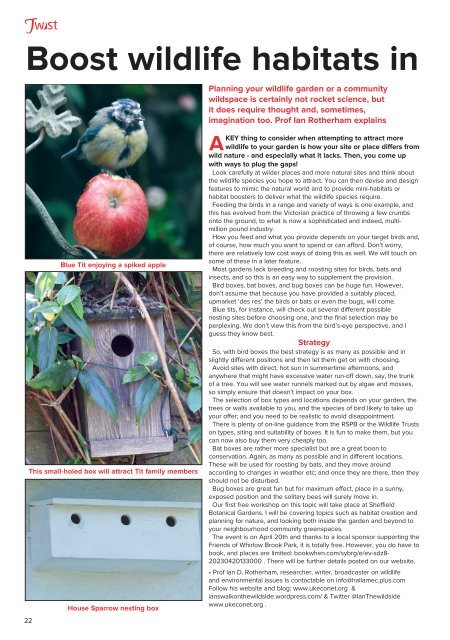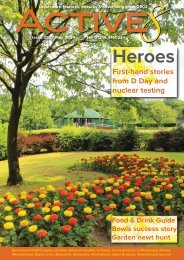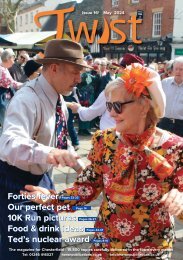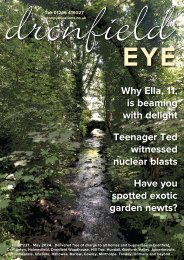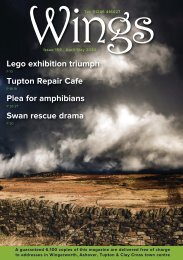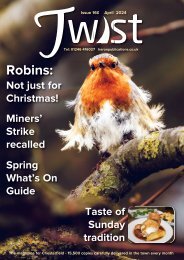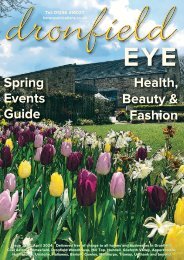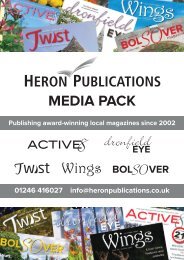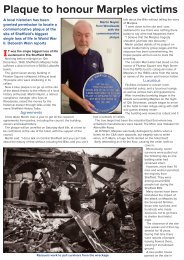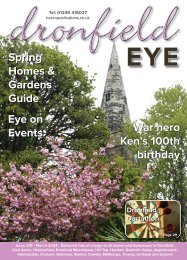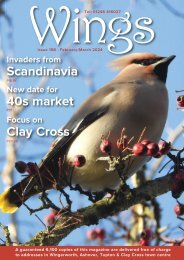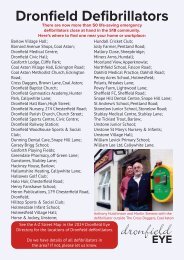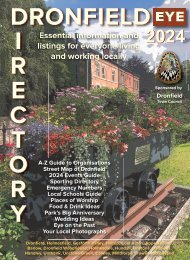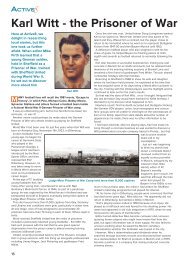Twist issue 148 April 2023
You also want an ePaper? Increase the reach of your titles
YUMPU automatically turns print PDFs into web optimized ePapers that Google loves.
Tw st<br />
Boost wildlife habitats in<br />
Blue Tit enjoying a spiked apple<br />
This small-holed box will attract Tit family members<br />
House Sparrow nesting box<br />
22<br />
Planning your wildlife garden or a community<br />
wildspace is certainly not rocket science, but<br />
it does require thought and, sometimes,<br />
imagination too. Prof Ian Rotherham explains<br />
A<br />
KEY thing to consider when attempting to attract more<br />
wildlife to your garden is how your site or place differs from<br />
wild nature - and especially what it lacks. Then, you come up<br />
with ways to plug the gaps!<br />
Look carefully at wilder places and more natural sites and think about<br />
the wildlife species you hope to attract. You can then devise and design<br />
features to mimic the natural world and to provide mini-habitats or<br />
habitat boosters to deliver what the wildlife species require.<br />
Feeding the birds in a range and variety of ways is one example, and<br />
this has evolved from the Victorian practice of throwing a few crumbs<br />
onto the ground, to what is now a sophisticated and indeed, multimillion<br />
pound industry.<br />
How you feed and what you provide depends on your target birds and,<br />
of course, how much you want to spend or can afford. Don’t worry,<br />
there are relatively low cost ways of doing this as well. We will touch on<br />
some of these in a later feature.<br />
Most gardens lack breeding and roosting sites for birds, bats and<br />
insects, and so this is an easy way to supplement the provision.<br />
Bird boxes, bat boxes, and bug boxes can be huge fun. However,<br />
don’t assume that because you have provided a suitably placed,<br />
upmarket ‘des res’ the birds or bats or even the bugs, will come.<br />
Blue tits, for instance, will check out several different possible<br />
nesting sites before choosing one, and the final selection may be<br />
perplexing. We don’t view this from the bird’s-eye perspective, and I<br />
guess they know best.<br />
Strategy<br />
So, with bird boxes the best strategy is as many as possible and in<br />
slightly different positions and then let them get on with choosing.<br />
Avoid sites with direct, hot sun in summertime afternoons, and<br />
anywhere that might have excessive water run-off down, say, the trunk<br />
of a tree. You will see water runnels marked out by algae and mosses,<br />
so simply ensure that doesn’t impact on your box.<br />
The selection of box types and locations depends on your garden, the<br />
trees or walls available to you, and the species of bird likely to take up<br />
your offer; and you need to be realistic to avoid disappointment.<br />
There is plenty of on-line guidance from the RSPB or the Wildlife Trusts<br />
on types, siting and suitability of boxes. It is fun to make them, but you<br />
can now also buy them very cheaply too.<br />
Bat boxes are rather more specialist but are a great boon to<br />
conservation. Again, as many as possible and in different locations.<br />
These will be used for roosting by bats, and they move around<br />
according to changes in weather etc; and once they are there, then they<br />
should not be disturbed.<br />
Bug boxes are great fun but for maximum effect, place in a sunny,<br />
exposed position and the solitary bees will surely move in.<br />
Our first free workshop on this topic will take place at Sheffield<br />
Botanical Gardens. I will be covering topics such as habitat creation and<br />
planning for nature, and looking both inside the garden and beyond to<br />
your neighbourhood community greenspaces.<br />
The event is on <strong>April</strong> 20th and thanks to a local sponsor supporting the<br />
Friends of Whirlow Brook Park, it is totally free. However, you do have to<br />
book, and places are limited: bookwhen.com/sybrg/e/ev-sdz8-<br />
<strong>2023</strong>0420133000 . There will be further details posted on our website.<br />
• Prof Ian D. Rotherham, researcher, writer, broadcaster on wildlife<br />
and environmental <strong>issue</strong>s is contactable on info@hallamec.plus.com<br />
Follow his website and blog: www.ukeconet.org &<br />
ianswalkonthewildside.wordpress.com/ & Twitter @IanThewildside<br />
www.ukeconet.org .


